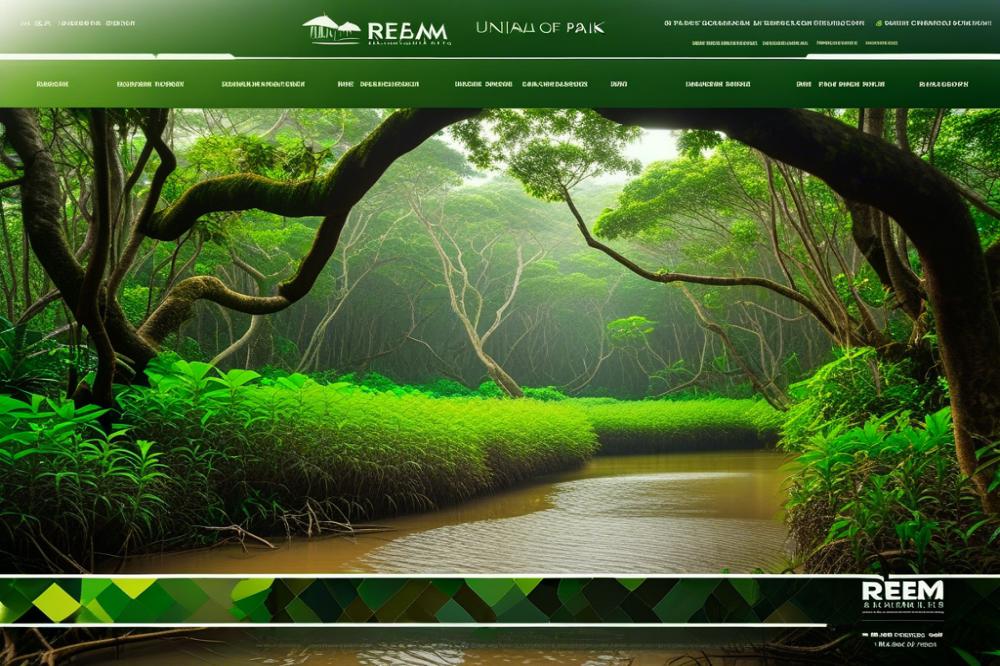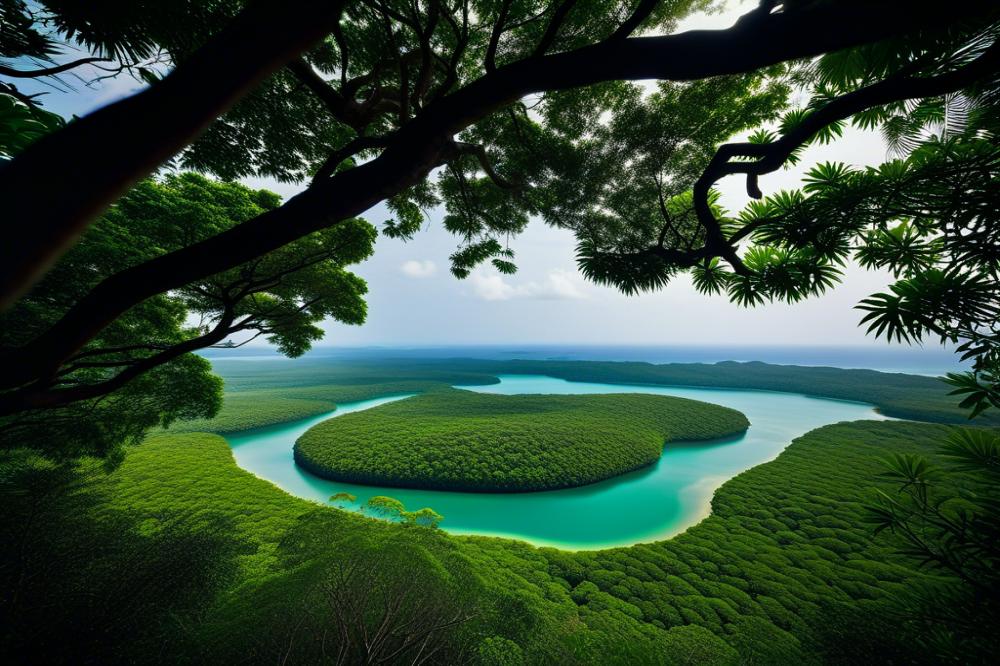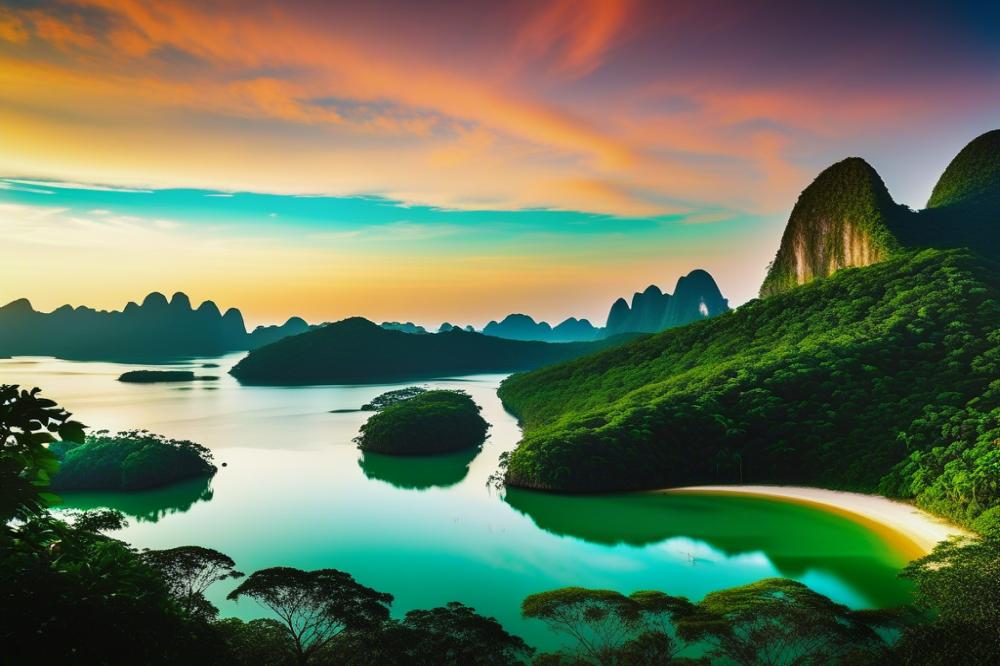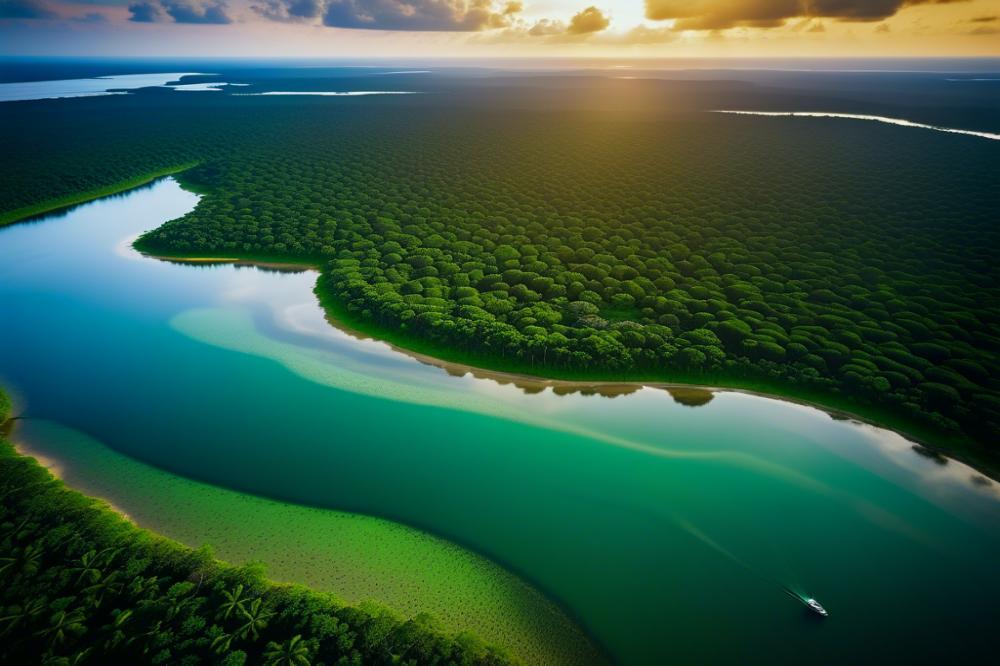Exploring the Unique flora and fauna of Ream National Park
Ream National Park is a beautiful nature reserve located along the coast of Cambodia. This park is vital for preserving various ecosystems, including tropical rainforests and marine habitats. Home to a wide range of plants and animals, its significance extends beyond mere scenery. Visitors discover why it ranks among the country’s cherished natural treasures.
Biodiversity plays a crucial role in Cambodia’s environment. The rich variety of flora and fauna contributes to ecological balance. Many species found here are endangered, highlighting the need for conservation efforts. Protecting these species helps maintain the health of all living organisms within their ecosystems. The park serves as a sanctuary for wildlife, offering critical habitats where animals can thrive.
Adventuring in Cambodia offers delightful opportunities. Travelers can explore this stunning park, whether hiking through lush forests or taking a boat to observe marine life. Enjoying the picturesque landscapes leaves lasting memories. Exploring such rich Biodiversity not only delights the senses but also fosters a deeper appreciation for nature and its wonders.
Exploring Ream National Park

Location and Accessibility
Ream National Park is located on the southeastern coast of Cambodia. It can be found near the town of Sihanoukville, making it easily accessible for both tourists and researchers. Visitors may travel by road and enjoy the scenic beauty of the countryside. Public transportation options are available, but renting a vehicle provides more flexibility. This park offers an opportunity to escape urban life and immerse oneself in nature.
Overview of the Park’s Size and Diverse Ecosystems
Spanning over 210 square kilometers, the park showcases a variety of ecosystems. These areas include tropical rainforests, coastal zones, and mangrove forests. Each ecosystem supports a wide range of wildlife and plant species, contributing to the area’s biodiversity. Conservation efforts are vital for protecting these habitats and the endangered species that reside within them. The blend of landscapes invites exploration and discovery.
Description of Habitats Present
Tropical rainforests in the park are dense and lush, home to countless flora and fauna. Towering trees create a canopy that filters sunlight, providing a rich environment for many creatures. Birds, monkeys, and various insects thrive here. Coastal areas along the park’s edges host stunning beaches and vibrant marine life. This setting offers an opportunity for activities like swimming and snorkeling.
Mangroves play a crucial role in the ecosystem as well. They serve as nurseries for many fish species, enhancing the park’s environmental importance. The complex root systems protect shorelines from erosion and storm damage. Various reptiles and birds find refuge in these unique environments. Protecting these habitats is essential for maintaining the ecological balance in this nature reserve.
Flora of Ream National Park

The biodiversity of Ream National Park reveals a wealth of plant species found in the tropical rainforest. This area showcases a variety of trees, shrubs, and herbs that thrive in a warm and moist climate. Common plant life includes towering dipterocarps, various palms, and a multitude of ferns. Each of these species contributes to a lush and vibrant ecosystem.
Unique and Endemic Plant Life
Cambodia’s nature reserve is home to several unique and endemic species. Some of the plants found here exist nowhere else on Earth. They have adapted to specific environmental conditions, making them vital for the park’s ecosystem. These special adaptations can include peculiar shapes or survival techniques that enhance their resilience.
Importance of Flora in Maintaining the Ecosystem
Flora plays an essential role in sustaining the overall health of ecosystems. Plants produce oxygen through photosynthesis, which is crucial for all wildlife. Furthermore, they provide food and habitat for various fauna. Their roots stabilize the soil, preventing erosion and maintaining water quality. This intricate balance highlights the interconnectedness of all living things.
Role of Plants in Conservation Efforts
Conservation efforts in this area focus on protecting its flora and the wildlife that depends on it. Preserving plant species helps safeguard habitats for endangered species, such as certain reptiles and birds. Active restoration projects may include replanting native species to restore degraded areas. This approach not only helps the plants recover but also supports the recovery of marine life along the coast.
Fauna of Ream National Park

Wildlife diversity in this region is impressive. Ream National Park boasts a rich mix of terrestrial and marine life. From large mammals to vibrant bird species, the variety is captivating. This nature reserve, located in Cambodia, serves as a critical habitat for many organisms.
Highlighting Endangered Species
Several endangered species call this park home. The IUCN Red List includes animals like the critically endangered green sea turtle and the vulnerable lesser adjutant stork. Their presence emphasizes the need for conservation efforts. Protecting these species helps maintain the park’s biodiversity and ecological balance.
Importance of Wildlife in the Ecosystem
Wildlife plays a vital role in ecosystems. Each animal contributes to the functioning of the environment in different ways. For instance, large herbivores help shape the landscape, while carnivores control prey populations. These interactions highlight the interdependence of species within their habitat.
Discussion of Bird Species and Their Significance
Bird species are particularly significant in Ream National Park. Over 200 avian species can be spotted here. Many of these birds, such as the endangered white-shouldered ibis, are indicators of ecological health. Their presence signals a balanced ecosystem, while their decline could point to environmental issues.
Birdwatching enthusiasts often visit to admire these fascinating creatures. Observing birds in their natural habitat fosters a greater appreciation for wildlife. The vibrant colors and unique calls of these species enrich the experience of exploring this park. Conservation efforts focus on protecting their habitats to enhance population stability.
Marine Life in Ream National Park

Ream National Park is home to a rich variety of marine biodiversity, particularly in its coastal areas. These ecosystems play a critical role in the overall health of the environment. The balance of marine life supports both economic activities and ecological functions. Healthy marine ecosystems can provide food, livelihoods, and tourism opportunities for local communities.
Economic and Ecological Importance
Marine ecosystems contribute significantly to the local economy. Fishing is vital for many families in Cambodia. Additionally, these areas offer recreational activities such as snorkeling and diving. Ecologically, they serve as nurseries for various fish species and habitat for many forms of wildlife. Healthy marine systems can help protect coastal areas from erosion, too.
Coral Reefs and Their Conservation
Coral reefs are one of the most fascinating aspects of marine life in the park. They are often called the rainforests of the ocean because of their vast biodiversity. Coral reefs support numerous organisms, including fish, mollusks, and crustaceans. However, these ecosystems are threatened by climate change, pollution, and overfishing. Conservation efforts are essential to protect these beautiful structures and the delicate balance they maintain. Strategies may include establishing protected areas and promoting sustainable fishing practices.
Unique Marine Species in the Area
Many fascinating species inhabit the waters of this nature reserve. For instance, the endangered dugong can sometimes be spotted grazing on seagrass. Various species of colorful reef fish add vibrancy to the underwater landscape. Sea turtles also visit these waters, using them as feeding and nesting grounds. Various invertebrates, such as starfish and sea urchins, contribute to the ecosystem’s overall health. The vibrant marine life showcases the diversity and complexity of these coastal environments.
Conservation Efforts in Ream National Park
Overview of conservation initiatives
Various conservation initiatives are underway in this important nature reserve. Organizations work tirelessly to protect flora and fauna. These actions often include habitat restoration and wildlife monitoring. Efforts focus on the unique ecosystems found in the tropical rainforest and coastal areas of Cambodia. Programs engage in education and awareness campaigns to inform the public about the significance of biodiversity. Protecting endangered species remains a top priority. Regular assessments help track the health of marine life and land animals alike.
Role of local communities in conservation
Local communities play a vital role in conservation efforts. By involving residents, organizations foster a sense of ownership over natural resources. Training programs educate locals on sustainable practices. Fishing methods are modified to protect marine habitats while ensuring ample catch. Many communities also participate in ecotourism initiatives. This encourages people to appreciate the park while providing economic benefits. When local people understand the value of preservation, they are more likely to engage in protective measures.
Challenges faced in wildlife preservation
Wildlife preservation faces numerous challenges within the park. One major issue is illegal logging, which threatens the tropical rainforest. Poaching also poses a significant risk to various endangered species. Furthermore, development projects often encroach on protected areas. Pollution from nearby urban areas can harm the marine life found along the coast. Each challenge undermines the overall health of ecosystems. These threats require constant vigilance and innovative solutions.
Importance of protecting ecosystems and biodiversity
Protecting ecosystems and biodiversity is essential for multiple reasons. Healthy environments support not only wildlife but also human livelihoods. Flora and fauna create a balanced system that contributes to climate stability. Additionally, diverse species serve as vital resources for medicine and agriculture. The health of marine life is equally important for maintaining food security. Each species plays a role in the larger web of life. Without concerted efforts in conservation, many unique forms of life could disappear from this vital region of Cambodia.
Holiday Adventures and Activities
Visitors to Ream National Park in Cambodia can immerse themselves in a variety of engaging activities. Opportunities abound to explore the diverse ecosystems of this tropical rainforest. Adventurous spirits will find nature trekking to be especially rewarding. Hiking trails wind through lush landscapes filled with vibrant flora and fauna.
Nature Trekking and Wildlife Watching
Guided treks offer a chance to spot incredible wildlife. Many animals in this region are endemic, making each sighting special. Rare birds, reptiles, and even some endangered species call this park home. Wildlife watching not only entertains but also fosters appreciation for nature’s beauty.
Eco-Tourism Opportunities and Responsible Travel
Engaging in eco-tourism is crucial in promoting conservation. Tourists can participate in activities that benefit both the environment and local communities. Choices can include staying at eco-friendly lodges or attending workshops about sustainable practices. Learning about local ecosystems adds depth to visitors’ experiences.
Importance of Engaging with Local Wildlife and Flora
Understanding the connections within the park enhances the adventure. Observing marine life in the coastal areas offers another layer of exploration. Each species plays a role in maintaining balance in these habitats. Respecting wildlife is essential for preserving this natural resource for future generations.
Final Thoughts on Ream National Park
Recapping the significance of Ream National Park reveals its vital role in preserving nature and biodiversity. This area is a habitat for countless species, many of which are found nowhere else. The rich flora and diverse fauna create a vibrant ecosystem that contributes greatly to the environment. Protecting such areas is essential for maintaining ecological balance.
Visiting this park offers a chance to witness its wonders firsthand. Exploring the lush landscapes and unique wildlife can be an unforgettable experience. Travelers can observe the interactions within the ecosystem, making each visit educational and engaging. Walking its trails or sailing through its waters opens the senses to nature’s beauty.
Conservation and responsible tourism are crucial for the future of this park. Tourists have a role to play in preserving these natural treasures. By respecting the environment and following guidelines, visitors can help maintain the park’s health. Understanding the impact of our actions helps foster a sense of responsibility towards nature.
In summary, Ream National Park stands as a testament to Cambodia’s natural heritage. It invites everyone to appreciate and protect its striking environment. Embracing both adventure and conservation will ensure that future generations also enjoy its splendor.



